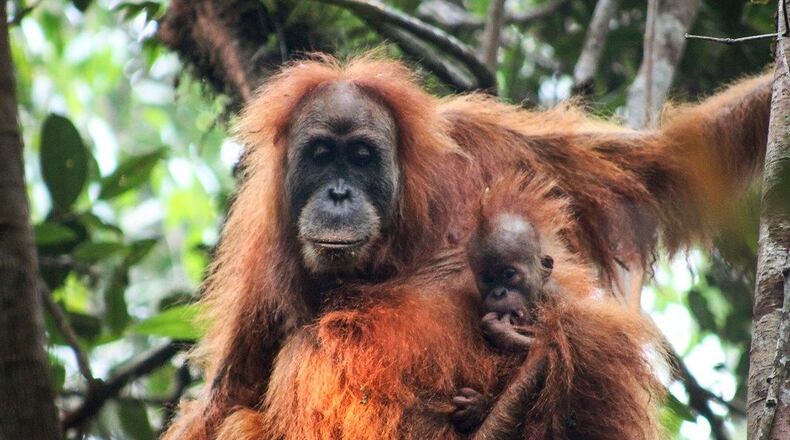"This new species is as old as the earliest of our own direct ancestors," said Erik Meijaard, a conservation scientist at the Australian National University who was involved in the research.
"It has evolved over some 3 million years to quietly adapt to the specific conditions in this part of the Asian tropics."
Scientists say the new species has smaller heads and frizzier orange fur than other orangutans.
Until recently, only two genetically distinct types of orangutan had been identified: the Bornean orangutan (Pongo pygmaeus) and the Sumatran orangutan (Pongo abelii). It was only after identifying key differences in the teeth, skull, DNA, diet and calls of the Tapanuli orangutan (Pongo tapanuliensis) that the international team concluded they had found a unique species.
"The differences are very subtle, not easily observable to the naked eye," professor Michael Kruetzen of the University of Zurich, one of the researchers, told Reuters.
Frizzy hair and a moustache
Researchers from ANU actually happened on the population of apes in 1997 but did not consider them to be a separate species until they got the chance to examine a skeleton in 2013.
The Tapanuli orangutan bears a close resemblance to its Bornean and Sumatran cousins, but close observers notice it has a smaller head, slightly frizzier cinnamon-colored fur and a "prominent moustache," the scientists wrote.
They believe the three types of orangutans share a common ancestor but began to diverge into different species about 3.4 million years ago.
Species on the brink
There are believed to be only about 800 Tapanuli orangutans left. That makes it the most endangered great ape in the world, the researchers wrote.
Like the other existing orangutan species, the Tapanuli group is highly vulnerable and faces threats from forest clearance, mining, illegal logging and poachers, as well as a planned hydroelectric dam that could potentially flood up to 8 percent of its habitat.
"If steps are not taken quickly to reduce current and future threats to conserve every last remaining bit of forest, we may see the discovery and extinction of a great ape species within our lifetime," the scientists said.
Both Sumatran and Bornean orangutans are listed as critically endangered by the International Union for Conservation of Nature.
This article originally appeared on DW.com. Its content was created separately to USA Today.
About the Author
